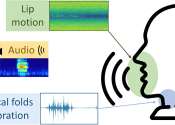Comprehensive dataset for contactless lip reading and acoustic analysis holds potential for speech recognition tech
Sophisticated new analysis of the physical processes which create the sounds of speech could help empower people with speech impairments and create new applications for voice recognition technologies, researchers say.
Dec 14, 2023
0
35









